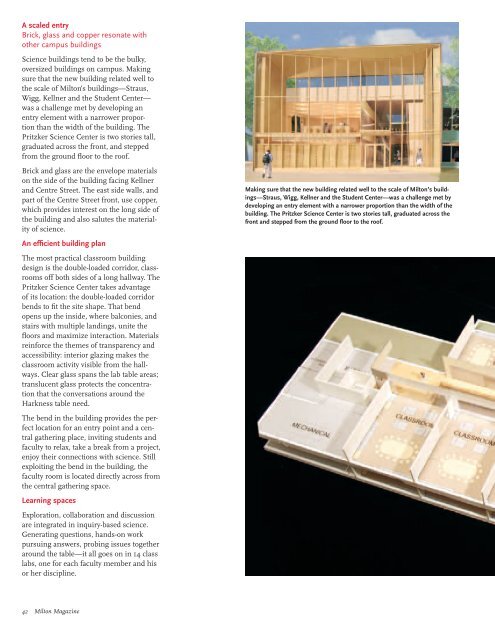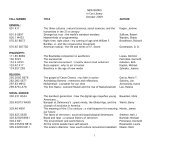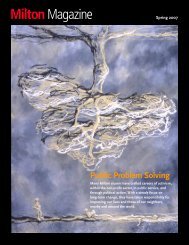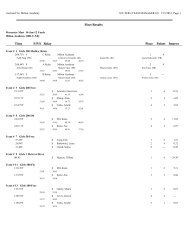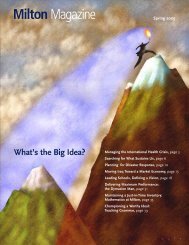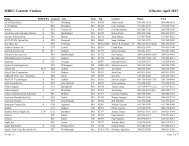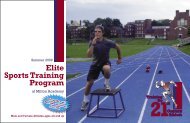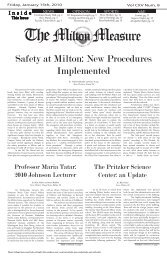Milton Magazine - Milton Academy
Milton Magazine - Milton Academy
Milton Magazine - Milton Academy
- No tags were found...
You also want an ePaper? Increase the reach of your titles
YUMPU automatically turns print PDFs into web optimized ePapers that Google loves.
A scaled entryBrick, glass and copper resonate withother campus buildingsScience buildings tend to be the bulky,oversized buildings on campus. Makingsure that the new building related well tothe scale of <strong>Milton</strong>’s buildings—Straus,Wigg, Kellner and the Student Center—was a challenge met by developing anentry element with a narrower proportionthan the width of the building. ThePritzker Science Center is two stories tall,graduated across the front, and steppedfrom the ground floor to the roof.Brick and glass are the envelope materialson the side of the building facing Kellnerand Centre Street. The east side walls, andpart of the Centre Street front, use copper,which provides interest on the long side ofthe building and also salutes the materialityof science.An efficient building planThe most practical classroom buildingdesign is the double-loaded corridor, classroomsoff both sides of a long hallway. ThePritzker Science Center takes advantageof its location: the double-loaded corridorbends to fit the site shape. That bendopens up the inside, where balconies, andstairs with multiple landings, unite thefloors and maximize interaction. Materialsreinforce the themes of transparency andaccessibility: interior glazing makes theclassroom activity visible from the hallways.Clear glass spans the lab table areas;translucent glass protects the concentrationthat the conversations around theHarkness table need.The bend in the building provides the perfectlocation for an entry point and a centralgathering place, inviting students andfaculty to relax, take a break from a project,enjoy their connections with science. Stillexploiting the bend in the building, thefaculty room is located directly across fromthe central gathering space.Learning spacesExploration, collaboration and discussionare integrated in inquiry-based science.Generating questions, hands-on workpursuing answers, probing issues togetheraround the table—it all goes on in 14 classlabs, one for each faculty member and hisor her discipline.Making sure that the new building related well to the scale of <strong>Milton</strong>’s buildings—Straus,Wigg, Kellner and the Student Center—was a challenge met bydeveloping an entry element with a narrower proportion than the width of thebuilding. The Pritzker Science Center is two stories tall, graduated across thefront and stepped from the ground floor to the roof.42 <strong>Milton</strong> <strong>Magazine</strong>


